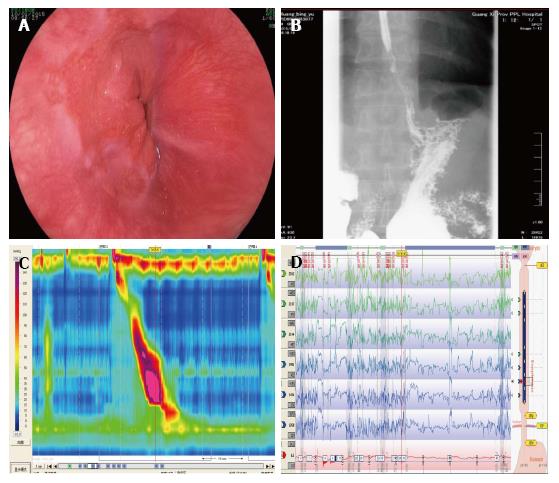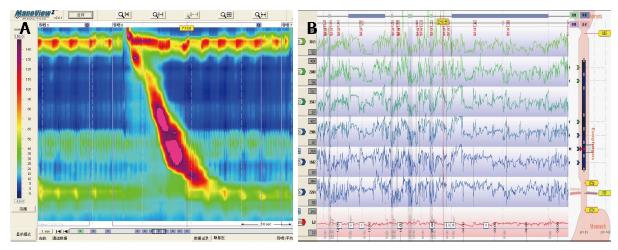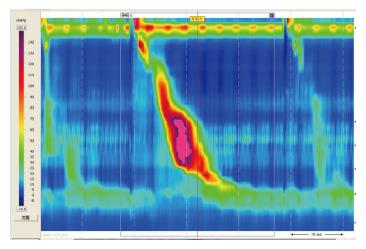Copyright
©The Author(s) 2017.
World J Gastrointest Endosc. Dec 16, 2017; 9(12): 590-593
Published online Dec 16, 2017. doi: 10.4253/wjge.v9.i12.590
Published online Dec 16, 2017. doi: 10.4253/wjge.v9.i12.590
Figure 1 The workup of the patient for the first time.
A: Esophageal lesions of the patient under endoscopy, which were suggestive of BE; B: Barium esophagogram showing reflux esophagitis and spastic contraction in the distal esophagus; C: Representative swallow from the patient’s initial HRM. The median IRP was high at 21.5 mmHg, and the DCI was elevated to 8099.9 mmHg-s-cm; D: 24-h pH-impedance monitoring. It can monitor 100% acid reflux into the esophagus. DCI: Distal contractile integral; HRM: High-resolution manometry; IRP: Integrated relaxation pressure.
Figure 2 Esophageal test results for the second time.
A: Representative swallow from the patient’s repeat esophageal HRM. Median IRP was normal at 14.7 mmHg. DCI was higher than normal, which was 8120.1 mmHg-cm-s, and six swallows with DCI > 8000 mmHg-s-cm in 10 liquid swallows. Esophageal manometry was consistent with jackhammer esophagus; B: 24-h pH-impedance monitoring was repeated, which was negative for gastroesophageal reflux disease. DCI: Distal contractile integral; HRM: High-resolution manometry; IRP: Integrated relaxation pressure.
Figure 3 A representative swallow from the patient’s repeat esophageal high-resolution manometry after administration of deanxit.
Median IRP was elevated at 10.1 mmHg. DCI of each swallow was higher than the normal range but < 8000 mmHg-cm-s, which was improved after treatment. DCI: Distal contractile integral; IRP: Integrated relaxation pressure.
- Citation: Li JY, Zhang WH, Huang CL, Huang D, Zuo GW, Liang LX. Deanxit relieves symptoms in a patient with jackhammer esophagus: A case report. World J Gastrointest Endosc 2017; 9(12): 590-593
- URL: https://www.wjgnet.com/1948-5190/full/v9/i12/590.htm
- DOI: https://dx.doi.org/10.4253/wjge.v9.i12.590











